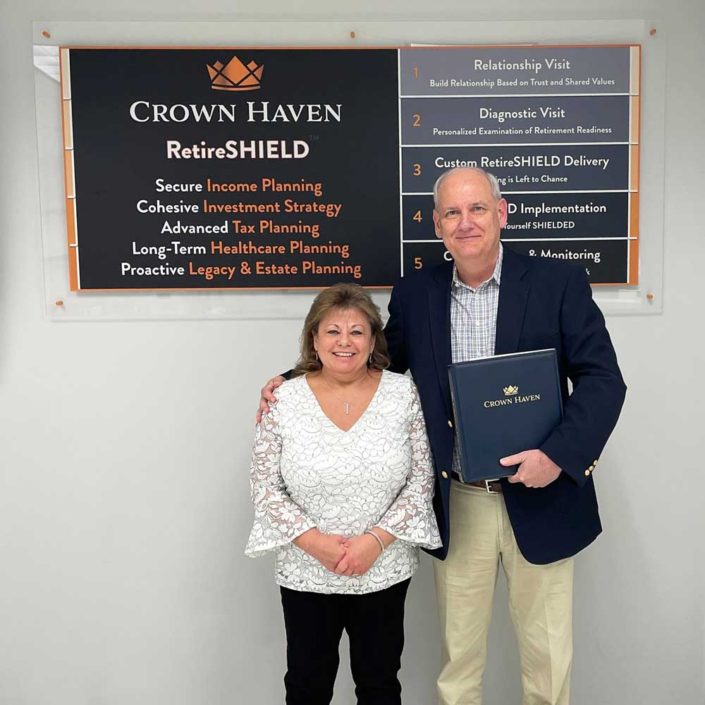Navigating the 401(k) Contribution Limits: A Roadmap to Retirement Success
In the world of financial planning, crafting a robust retirement strategy is paramount. This journey is built upon informed decisions about your savings, investments, and, notably, your 401(k) plan. The 401(k) plan, for most, is a cornerstone of retirement preparation, offering a tax-advantaged avenue to accumulate wealth for your golden years in retirement. Understanding the nuances of 401(k) contribution limits is critical in shaping a secure retirement strategy. In this article we will delve into the intricate realm of 401(k) contribution limits, equipping you with the knowledge to take charge of your financial future.
Demystifying the 401(k) Plan
Let’s begin with the basics. A 401(k) plan is a retirement savings account offered by employers to their employees, named after a section of the U.S. tax code. This plan allows you to allocate a portion of your pre-tax income into the account, with these contributions then invested in a diversified portfolio of assets, which may include stocks and bonds. What typically sets a 401(k) plan apart is the automatic deduction of contributions from your paycheck, making it a convenient as well as an efficient way to save for retirement.
Why are 401(k) plans so pivotal in retirement planning? Here are some compelling reasons:
- Tax Benefits: Contributions to a traditional 401(k) plan are tax-deductible, effectively reducing your taxable income for the year and leading to immediate tax savings.
- Employer Contributions: Many employers offer matching contributions, essentially free money that bolsters your retirement savings.
- Long-Term Growth: 401(k) plans allow your investments to grow tax-deferred, meaning you only pay taxes on the gains when you withdraw the funds in retirement. This tax advantage can result in substantial wealth accumulation.
With this foundation laid, let’s venture into the core of the matter: 401(k) contribution limits.
Contribution Limits for 2024
Each year, the Internal Revenue Service (IRS) sets limits on the maximum amount you can contribute to your 401(k) plan. These limits are specifically designed to ensure fairness and prevent higher-income individuals from disproportionately benefiting from the tax advantages of 401(k) plans. For 2024, the following contribution limits are applicable:
- Employee Contribution Limit: In 2024, the maximum amount you can contribute to your 401(k) plan as an employee is $20,500. This limit applies uniformly to both traditional and Roth 401(k) plans. For individuals under the age of 50, this serves as the cap on their contributions.
- Catch-Up Contributions: A beneficial provision for those aged 50 or older, catch-up contributions allow individuals to contribute more than the standard limit. In 2024, the catch-up contribution limit is $6,500. Consequently, individuals in this age group can contribute up to $27,000.
- Employer Contributions: In addition to your personal contributions, your employer may also contribute to your 401(k) account. The total contribution limit, encompassing both employee and employer contributions, is the lesser of 100% of your compensation or $61,000 in 2024. This limit has seen substantial increases recently, facilitating more significant overall contributions.
It is imperative to recognize that these contribution limits are subject to annual adjustments. Therefore, it is essential to stay informed of the latest figures to tailor your retirement savings strategy effectively.
Age-Related Contribution Limits
401(k) plans often feature increased contribution limits as you age, offering a mechanism for older workers to catch up on their retirement savings. These age-related contribution limits function as follows:
- Under 50: For individuals under the age of 50, the maximum annual contribution limit to a 401(k) plan in 2024 remains $20,500.
- Age 50 and Older: Those aged 50 or older become eligible for catch-up contributions. In 2024, this provision enables them to contribute an additional 6,500, resulting in a total allowable contribution of $27,000 for the year.
The age-related contribution limits acknowledge that as retirement approaches, you may need to accelerate your savings to meet your financial goals. The catch-up contribution option can be an invaluable asset in achieving this.
Traditional vs. Roth 401(k) Plans
Understanding the differences between traditional 401(k) plans and Roth 401(k) plans, as well as how contribution limits apply to each, is absolutely essential for effective retirement planning.
Traditional 401(k) Plan:
- Contributions are made with pre-tax dollars, reducing your current taxable income.
- Both contributions and investment gains grow tax-deferred, meaning you only pay taxes on them when you withdraw the funds in retirement.
- Contribution limits for traditional 401(k) plans in 2024 are identical to those for Roth 401(k) plans: $20,500 for those under 50 and $27,000 for those 50 and older.
Roth 401(k) Plan:
- Contributions are made with after-tax dollars, so they do not reduce your current taxable income.
- However, qualified withdrawals in retirement, including both contributions and earnings, are entirely tax-free.
- Contribution limits for Roth 401(k) plans mirror those of traditional 401(k) plans in 2024.
The choice between a traditional and Roth 401(k) plan depends on your current tax situation and your vision for retirement. If you anticipate being in a higher tax bracket during retirement or prefer tax-free income in your retirement years, a Roth 401(k) may be the more suitable choice. Conversely, if you aim to lower your current taxable income, a traditional 401(k) plan may be your preferred option. Keep in mind that some plans permit the allocation of contributions between both types.
Employer Match and Profit-Sharing Contributions
While understanding your contribution limits is crucial, it is equally vital to comprehend how employer contributions can impact your overall retirement savings. Many employers offer matching contributions, whereby they match a portion of your contributions up to a specific limit. Some may even provide profit-sharing contributions, adding an extra layer of growth potential to your retirement nest egg.
Employer Matching Contributions:
Employer matches represent free money. Your employer will match a percentage of your contributions, usually up to a specific percentage of your salary. For example, if your employer offers a 50% match on contributions up to 6% of your salary, and you earn $50,000, they will contribute $1,500 if you contribute $3,000 (6% of your salary).
Profit-Sharing Contributions:
Some employers go beyond matching and make profit-sharing contributions. These contributions are typically linked to the company’s profits and, as you might imagine, may vary from year to year. They are subject to specific rules and restrictions, so consult with your employer to understand their profit-sharing policy.
Tax Benefits of 401(k) Contributions
One of the most appealing aspects of 401(k) plans is the tax benefits they offer. Understanding how these tax advantages function can help you make informed decisions regarding your retirement savings strategy.
Tax Deductions:
Contributions to a traditional 401(k) plan are made with pre-tax dollars, effectively reducing your taxable income for the year and leading to immediate tax savings. For example, if you earn $60,000 and contribute $10,000 to your traditional 401(k), you will only pay taxes on $50,000 of your income prior to considering the impact of your standard deductible.
Tax-Deferred Growth:
Both your contributions and any investment gains within your 401(k) plan grow tax-deferred, meaning you only pay taxes on the earnings when you withdraw the funds in retirement. The longer your funds remain invested, the greater the potential for growth.
Lower Tax Bracket in Retirement:
Many individuals anticipate being in a lower tax bracket during retirement compared to their working years. This can make traditional 401(k) contributions even more advantageous, as you may pay fewer taxes on your withdrawals.
Roth 401(k) Tax Benefits:
While Roth 401(k) contributions do not provide an immediate tax deduction, qualified withdrawals in retirement are entirely tax-free. This can be especially beneficial if you foresee being in a higher tax bracket during retirement or prefer tax-free income in your retirement years.
It is essential to note that while traditional 401(k) contributions offer immediate tax benefits, they come with tax implications when you withdraw the funds during retirement. Conversely, Roth 401(k) contributions offer tax-free withdrawals but do not provide an upfront tax deduction. Your choice between the two hinges on your current tax situation and your vision for retirement.
Schedule Your Relationship Call
Improve your financial future with Crown Haven’s RetireSHIELD™!
Strategies for Maximizing 401(k) Contributions
Now that you possess a solid understanding of the contribution limits and tax benefits of 401(k) plans, let’s explore strategies for maximizing your 401(k) contributions and making the most of this retirement savings tool.
Contribute Early and Consistently:
Begin your 401(k) contributions as early as possible in your career. The power of compound interest means that even small, early contributions can grow significantly over time. Automate your contributions to ensure consistent retirement savings.
Leverage Employer Matching:
If your employer offers a matching contribution, aim to contribute enough to receive the full match. This essentially amounts to free money that can substantially boost your retirement savings.
Consider Catch-Up Contributions:
If you are 50 or older, embrace catch-up contributions to accelerate your savings. This can help compensate for any prior gaps in your retirement savings or turbocharge your financial security in your later working years.
Diversify Your Investments:
Within your 401(k) plan, diversify your investments across a range of assets, including stocks, bonds, and mutual funds. Diversification helps spread risk and can potentially enhance returns.
Periodically Review and Adjust:
Regularly assess your contributions to ensure they align with your retirement goals. If you receive a salary increase or experience changes in your financial situation, consider increasing your contributions accordingly.
Maximize Tax Advantages:
Grasp the tax advantages of both traditional and Roth 401(k) contributions and select the option that aligns with your current and future tax circumstances.
Automate Your Savings:
Establish automatic contributions from your paycheck to your 401(k) account. This “set it and forget it” approach guarantees consistent retirement savings.
Develop a Comprehensive Strategy:
Recognize that your 401(k) is just one element of your retirement plan. Consider other retirement savings vehicles, such as IRAs, and craft a holistic strategy that encompasses budgeting, debt management, and long-term financial objectives.
Consult a Financial Advisor:
If you are uncertain about your retirement strategy or how to maximize your 401(k) contributions, contemplate seeking guidance from a certified financial planner or advisor.
Remember that retirement planning is a lifelong endeavor, and the choices you make today can profoundly impact your financial security in retirement. By comprehending the contribution limits and implementing these strategies, you can pave the way for a more comfortable and prosperous retirement.
Penalties for Exceeding Contribution Limits
While optimizing your retirement savings is crucial, it is equally imperative to adhere to the IRS’s contribution limits. Exceeding these limits can lead to penalties and tax complications. Here is an overview of the consequences of contributing too much to your 401(k) plan:
- Excess Contribution Penalties: If you surpass the allowable limits for your 401(k) plan, the excess amount becomes taxable at your ordinary income tax rate. Additionally, you may incur a 6% excise tax penalty on the excess contribution amount, applied each year until you rectify the situation.
- Correcting Excess Contributions: To address an excess contribution, you must withdraw the surplus funds from your 401(k) plan by the tax-filing deadline, which is usually April 15 of the following year. Failure to do so in a timely manner will trigger the excise tax penalty.
- Maintain Communication: If you anticipate approaching the contribution limits due to multiple employers or other factors, maintain open communication with your plan administrator to ensure compliance.
- Keep Detailed Records: It is imperative to maintain meticulous records of your 401(k) contributions to prevent accidental over-contributions. Regularly review your pay stubs, contributions, and any employer matches or profit-sharing contributions.
- Adjust Contributions Mid-Year: If you foresee approaching the contribution limits during the year, consider modifying your contributions mid-year to avoid exceeding the limits.
- Seek Professional Guidance: If you find yourself in a situation where you have made excess contributions or are unsure about your contribution limits, consider seeking advice from a tax professional or financial advisor.
Steer clear of penalties for excess contributions to preserve the tax advantages of your 401(k) plan. By staying vigilant and understanding the limits, you can ensure your retirement savings remain on course while adhering to IRS regulations.
Conclusion: Charting Your Path to a Prosperous Retirement
In the realm of retirement planning, knowledge is your most potent asset. Understanding the maximum 401(k) contribution limits based on your age, comprehending the tax benefits of contributions, and acknowledging the influence of employer contributions can empower you to make sound choices regarding your retirement savings strategy.
At our financial advisory firm, we are committed to helping you achieve your retirement goals and secure the financial future you deserve. Whether you’re just beginning your career or approaching retirement age, optimizing your 401(k) plan can profoundly impact your financial stability in retirement. Stay informed, set clear objectives, and execute a well-thought-out savings plan to ensure a retirement that is comfortable and financially secure.
In summary, your 401(k) plan serves as a potent tool that can bestow financial security in your retirement years. By understanding the contribution limits, tax benefits, and the utilization of strategies discussed herein, you can chart a course towards a retirement that is prosperous and worry-free.
As financial advisors, we are here to guide you every step of the way on your retirement journey. Contact us today to embark on a path to financial security and a retirement that exceeds your expectations.












